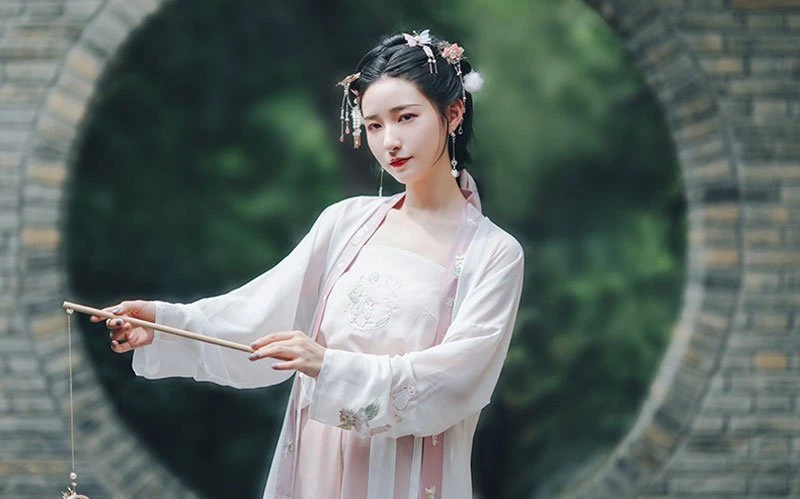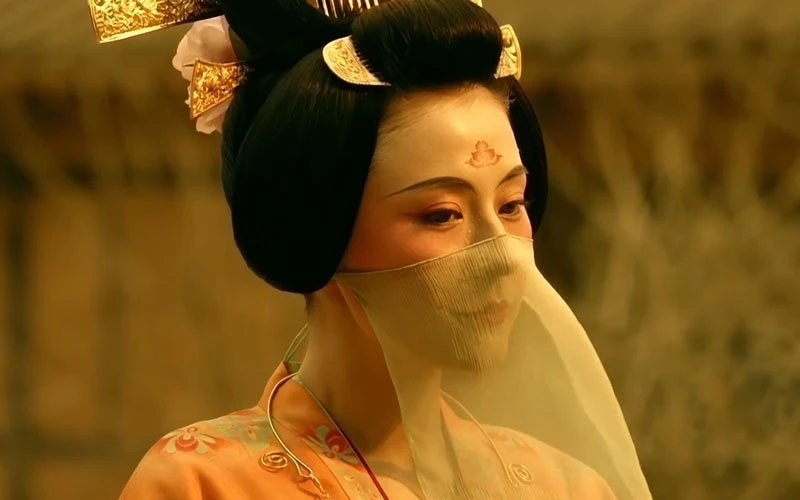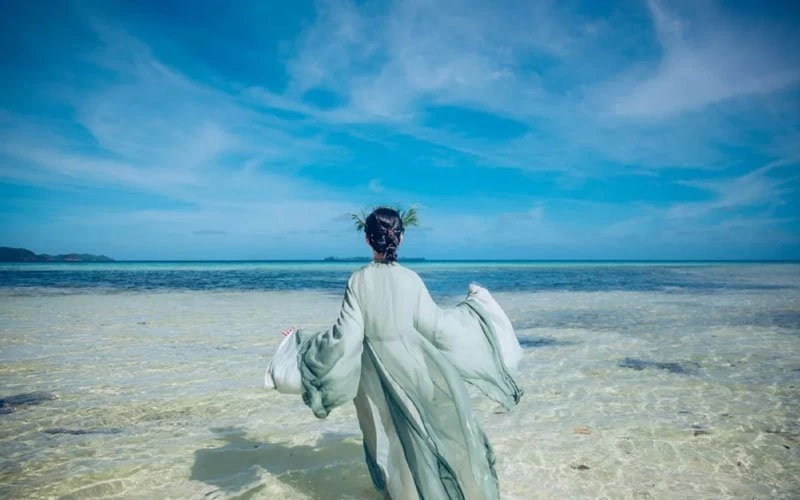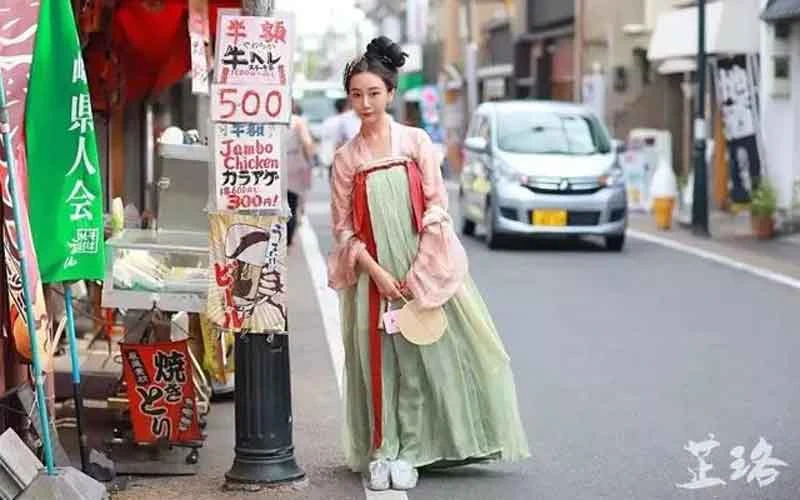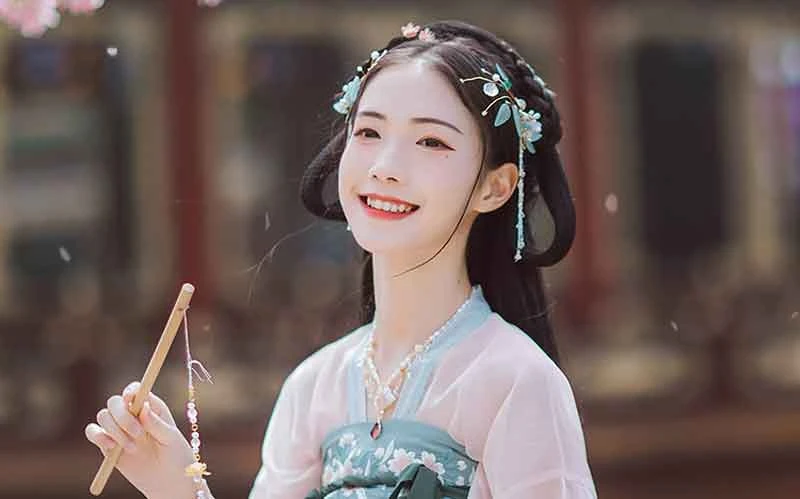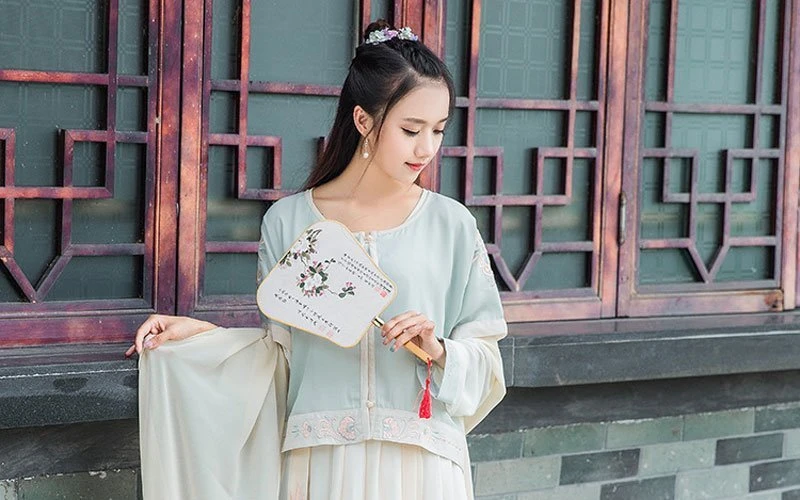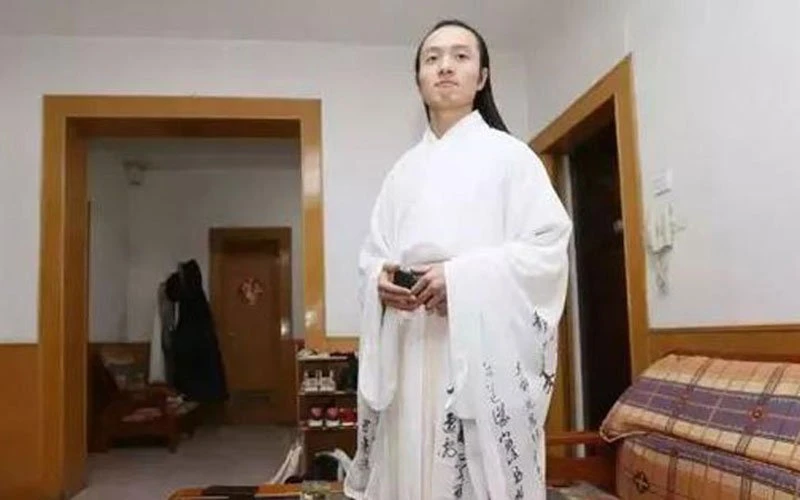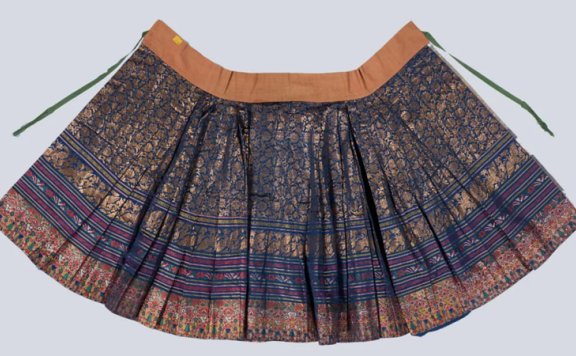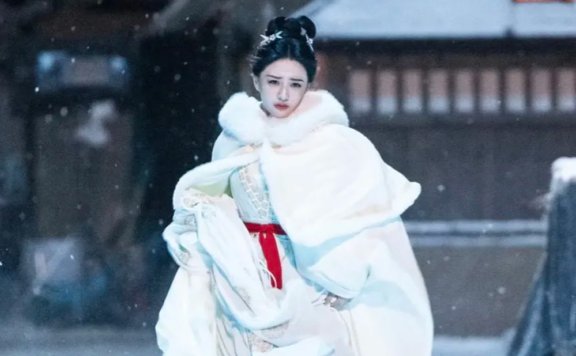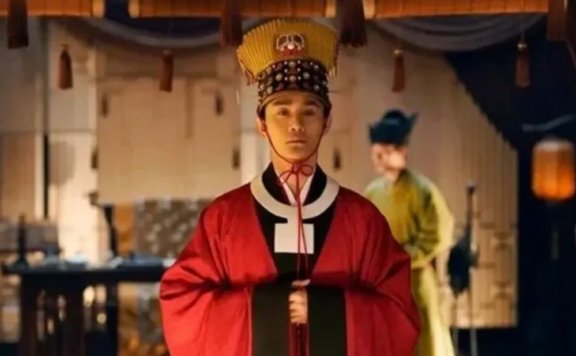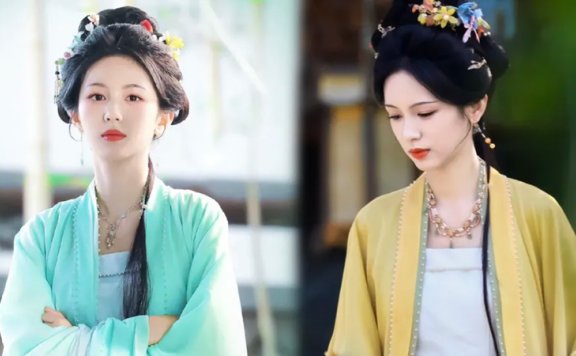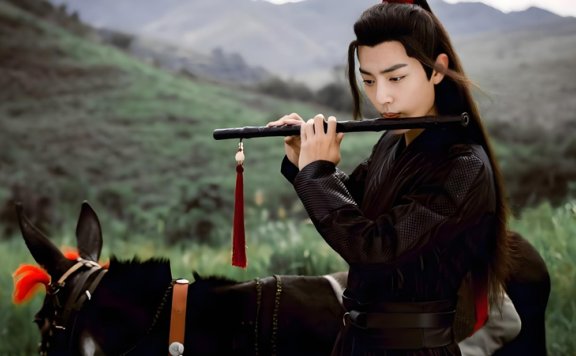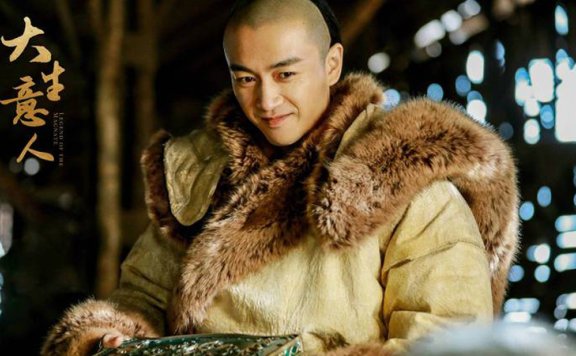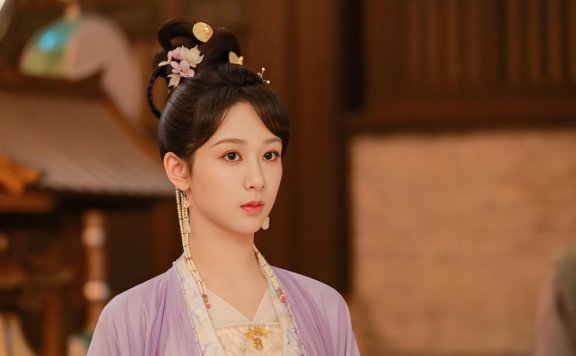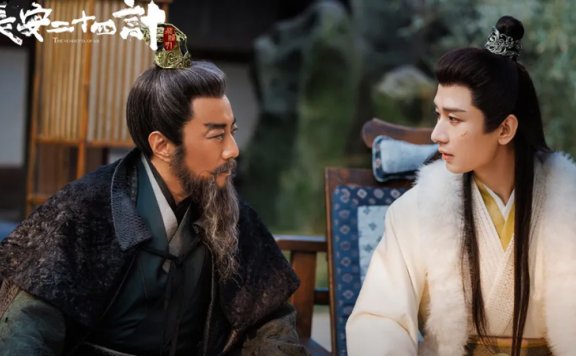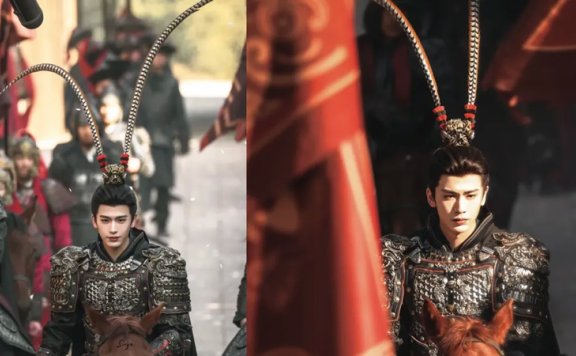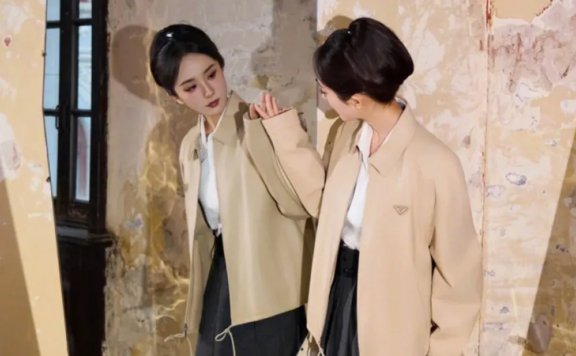Article
搜索结果:
-
How to Wear Hanfu | Quju Shenyi
Quju (曲裾) is a kind of Shenyi (深衣). Shenyi, that is, the top and the dress are connected together, use different colors of fabric as the edge. It is characterized by the deep hidden body, it looks graceful and elegant. Shenyi can specifically be subdivided into “Straight Ju Dress” and “Wavy Ju Dress”. This article introduces the way of wearing Quju. Step1: Get ready for Quyi. Put on the right sleeve first. Turn the inside of Quyi around behind you. Step2: And tie the laces behind you and under your right axilla. Step3: Put on the left sleeve. Step4: Tidy collar. Step5: Wrap Quju backward. Step6: Turn the sharp corners of the outer skirt behind you. Step7: Fix the end of the apex at the left hip. Step8: Fold the collar part of the outer jacket neatly. Step9: Belt tie. Step10: Find the midpoint of the belt, tie the belt in some places below the waist, the midpoint of the belt is aligned with the middle of the waist. Step11: Wrap the belt around your back and overlap the ends of the belt. Step12: Tie a bow in the middle of the waist. Step13: Tidy up the overlap of the… -
What Kind of Hanfu did the Song Dynasty Wear?
Hanfu in Tang Dynasty was introduced to you before. Today, it brings you the style of Hanfu in Song Dynasty. Before introducing the Han clothes of the Song Dynasty, let's first understand the Song Dynasty. The Song Dynasty (960 - 1279) was divided into two stages, the Northern and Southern Song Dynasties. It experienced eighteen emperors and enjoyed the country for 319 years. The greatest feature of hanfu in the Song Dynasty is simple and elegant. Compared with the elegant appearance and bold colors of the Hanfu of the Tang Dynasty, the Hanfu of the Song Dynasty is simple in shape, simple in tone, and the whole temperament seems more natural and elegant. Song Dynasty civilian men's clothing, mainly to the "Ao (袄)" and "Ru (襦)". In ancient times, the poorer people wore "Duanhe (短褐; short and thick clothes)", which were designed to facilitate work. In addition, men in the Song Dynasty also liked to wear a shirt (衫). Unlike the clothes we imagined, this kind of clothes was very self-cultivating, not the kind of generous design we imagined. Compared with men's clothing, women's clothing is more abundant, in the Song Dynasty, women generally wore Ao(袄), Ru(襦), Shan(衫), Beizi(褙子), Banbi(半臂), dress… -
What did the Tang Dynasty wear? | Chang'an Twenty-four Hours
Some time ago, I watched the hot Chinese drama Chang' a Twenty-four Hours (长安十二时辰). I was attracted by the hanfu of the Tang Dynasty in the play. So I did some research on the clothes and fittings of the Tang Dynasty. Let's see who is the most fashionable in Chang'an. Ruqun Talking about the trend of wearing and matching in the Tang Dynasty, it's natural that we can't do without ruqun. Ruqun is one of the most common and distinctive dresses in the Tang Dynasty. The main features of this dress are short clothes on the upper body and long skirts on the lower body. Some of them wear silk shoulders around their arms. Others wear half-arm outside the gown and then wear silk. "Ru (襦)" is for internal wear, sleeve length, upper and lower shorter, just to the waist. Long skirts were the clothes of women in the Tang Dynasty, most of which were made of silk. Skirt waist is high, can hide the chest, outside shoulder put on a yarn shirt, can make upper body skin half-covered, there is a kind of vague aesthetic feeling. Banbi (半臂) is a short-sleeved shirt, sleeve length to the elbow, knotted in… -
Do You Want Wear Hanfu Travel Around the World?
Today, I will introduce you to a photographer. Her name is Dang xiaoshi (当小时). She is a Sichuan girl. She spends most of her time in Beijing. Like many people, Dang xiaoshi has been shooting some "commercial works" in order to live. However, due to a strong preference for "Chinese Style", there are occasional works of ancient style in private. At first, Dang xiaoshi just liked the costume style, but all the changes started with an invitation. A friend of hers got married and invited her to Nepal to take wedding photos. At that time, Dang xiaoshi put forward the idea of shooting with the theme of "Hanfu" to her friends. Originally, she just wanted to take a meaningful wedding photo for my friends, but when the photo came out, it got a lot of praise. Looking at the endless praise of Chinese clothes, she found that the charm of the original culture is so great. So she left beautiful pictures around the world with her Chinese clothes. Let's see what beautiful places she's been to. Hanfu in the United States When Hanfu, music and American enthusiasm are combined, there is a different spark. Hanfu in Nepal Hanfu in Japan… -
Wearing as an angel: Chinese Hanfu in Japan
Kyoto is an ancient capital of Japan. It preserves a large number of historic buildings. Many Japanese and tourists will feel Japanese culture in kimonos. However, in this ancient city, some local people often see a Chinese girl in Chinese costume walking down the street. Local Japanese all raised their thumbs: so beautiful, just like a fairy! The girl's name is Zhi Luo. She was born in 1993. She is from Beijing, China. Because her husband (Chinese) has been a photographer in Japan for many years, she came to Kyoto to work more than half a year ago. Why does Zhiluo like Hanfu? This is closely related to family education, she has often participated in activities about Chinese culture since childhood. Nowadays, Zhi luo works in Kyoto. As a result of working in photography, Zhi Luo wore Hanfu to work and became a landscape on the street. Although there were differences in the form and system of Han uniforms in different dynasties, Zhi Luo was very fond of it. She said: "Wear Tang and Song style when it's hot, Wei, Jin and Ming-style when it's cold, you can wear it all year round." Usually, Zhi Luo wears Chinese clothes to… -
Chinese Girls Wear Hanfu to Climb the Highest Chug Peak in Germany
March is a hanfu enthusiast, She also insists on wearing Chinese clothes every day in her daily work, which affects colleagues and many people in the company. This time, she climbed the highest Chug peak in Germany in her hanfu, and the beautiful hanfu was praised by many tourists. Some photos of her trip to Germany: Some photos of daily wearing Hanfu: -
How to Wear Chest Ruqun Hanfu
Before, we introduced the way to wear a wist ruqun(one slice), and next, we will simply tell you how to wear a Qi xiong Ruqun(Chest Ruqun). Qi Xiong Ruqun is made up of front and back pieces(as the picture show). Step 1: Separate the front and back pieces and wear the back ones first. Step 2: tie up the back pieces. Step 3: tie up the front one(put white tape and red tape together). Step 4:Put an X-fork behind you, then take the tape to the front. Step 5: Make a knot. Step 6: The next step is to decorate the extra tape, wrap them in circles, just like a kind of Chinese food: Mahua (麻花, Fried Dough Twists). Step 7: Tie a knot at the end. Step 8: The red tape also needs to be wrap in circles. Finished~ Wearing Hanfu does not seem to be such a difficult thing, but it also requires repeated attempts to get the best look. If you have any questions during the wearing process, you are welcome to contact us by email, we will give you a more detailed explanation. More about how to wear Hanfu can be found here. -
How to Wear a Waist Ruqun
Many friends who have not touched Hanfu will have a lot of confusion when they wear Hanfu for the first time. How to wear it? Well, we will have a series of articles to simply tell you how to wear Hanfu. Today, let me show you how to wear a Waist Ruqun. First of all, what you have to know is that the Hanfu were without belts and buttons, all by lacing. The first one to introduce is Waist Ruqun(one slice), one slice means that the only one piece of dress. Step 1: Put the skirt over the waist, align the center of the skirt with the middle of the body, wrap the skirt around the waist and wrap the lower body. (This process is similar to a bathrobe after bathing.) Step 2: Sort out, and from the side, the place to be tied is left out. Step 3: Wrap the rope around the back (Note: cross the rope twice) Step 4: Then wrap around the front of the body. Step 5: Pass the rope through the part of the rope that has been tied to the waist Finished~ Wearing Hanfu does not seem to be such a difficult thing, but… -
A Men Wear Hanfu for 8 Years
Today, we are talking about a magical guy, because he is very obsessed with Hanfu for 8 years, and in order to wear Hanfu, he has stayed his long hair for 4 years. What's the story of wearing Hanfu every day? Let's take a look! He is only 23 years old, wearing a Hanfu is very ancient. From the beginning of junior high school, he watched the Hanfu on TV. He thought that Hanfu is very traditional and has a feeling of traditional nationality, so he began to obsess with Hanfu from that time. Hanfu is a traditional national costume that has been inherited by the Han people for more than 4,000 years. It gives a fresh feeling to him. In order to make Hanfu more beautiful, he began to keep his hair. Opened his home wardrobe, all are Hanfu clothes, there are more than 30 sets of various styles, all kinds of colors, the habit of buying Hanfu, the love of Hanfu, is obsessed. Whether it is cold winter or hot summer, he insists on wearing Hanfu to go out. Everyone has paid a lot of attention to him, and he has become the "Starman". How do you understand… -
Why the 500-Year-Old Mamianqun Is Today's Ultimate Fashion Statement
Walk down any modern city street in China, from Shanghai's Bund to The Forbidden City, and you'll likely spot a surprising silhouette: the Mamianqun (马面裙). With its distinctive flat front panels and flowing pleated sides, this Ming Dynasty-era skirt has leaped from museum displays and history books into the heart of contemporary wardrobes. It represents more than a cyclical fashion trend; it is a vibrant, living symbol where deep cultural heritage intersects with personal style. This skirt's journey reveals how a garment can transcend its original era to become a powerful medium for identity and aesthetic expression in the 21st century. A Design Born from Function The name Mamianqun originates from a unique architectural feature. Mamian refers to the rectangular, projecting bastions on ancient Chinese city walls, which the skirt's broad, unadorned front panel visually resembles. This core design principle—structured panels meeting dynamic pleats—emerged during the Ming Dynasty. The skirt is ingeniously constructed from two identical panels of fabric joined at a single waistband. When worn, these panels overlap at the front and back, creating four "gates" or openings: two prominent, flat rectangular sections at the front and back, flanked by pleated sides. This architecture served a profoundly practical purpose.… -
Why Does Xu Lu's Cloak in The Vendetta of An Look So Odd?
A curious detail in the new historical drama The Vendetta of An (长安二十四计) has captured the audience's attention. In it, actress Xu Lu (徐璐), who portrays the character Bai Wan (白莞), wears a cloak with an unusual feature: a separate panel of fabric draped over its back. This double-layered design strikes many modern viewers as anachronistic or simply strange, prompting questions about its historical accuracy. Could a cloak really be constructed this way in ancient times, or is this a fanciful creation of the costume department? The answer lies not in creative license, but in a forgotten practicality shaped by climate and necessity. A Functional Design The additional back panel is not mere decoration. It functions as a rain guard or wind flap. Its primary purpose was to create a protected air space between itself and the wearer's back. When rain or sleet fell, it would hit this outer layer first. Following gravity, the moisture would then slide down the panel's surface and away from the body, keeping the inner cloak—and the crucial lower back and waist area—dry and insulated. This logic is enhanced when the cloak material itself is water-resistant. Historical garments often used oils, waxed fabrics, or inherently… -
The Royal Collar: How a Song Dynasty Neckpiece Ruled the Court
In the historical drama Serenade of Peaceful Joy (清平乐), a peculiar white neckpiece adorns the robes of officials, instantly capturing the modern viewer's eye. To contemporary audiences, it might resemble an odd fashion accessory or even a pet's collar. But this item, far from mere decoration, was a powerful instrument of state authority. Its correct name is the Fangxin Quling (方心曲领), and its story is one of rigid hierarchy, cosmic symbolism, and physical discipline within the imperial system. A Mark of Rank Not every official in the Song Dynasty could wear the Fangxin Quling. Its privilege was reserved by law for those of the seventh rank and above, specifically those entitled to wear a certain type of ceremonial undergarment. This regulation, documented in texts like the Book of Sui (隋书·礼仪志七), made it a clear, visual demarcation between high-ranking central bureaucrats and lower-level local magistrates. It was a badge of inclusion within the empire's most powerful administrative circle. This was not a Song invention. The collar's institutional origins can be traced back to the Sui and Tang dynasties, evolving from more complex ceremonial attire. The Song court fully standardized and codified its use, embedding it firmly within the formal court robe… -
Pearls on Screen and Silk: Did a Song Dynasty Trend Just Go Viral?
A recent period drama photo has set the internet abuzz. In stills from the upcoming series Yi Ou Chun (一瓯春), actress Zhou Ye’s (周也) costumes feature a striking detail: hems and seams meticulously edged with pearls. Online commentators were quick to praise the exquisite craftsmanship, with many marveling at the advanced aesthetic sensibilities of ancient China. This isn't just a random design choice; it’s a direct homage to a specific and lavish fashion trend from the Song Dynasty (960–1279 AD). The shimmering trim is a recreation of Zhu Luo (珠络, pearl edging), a practice that saw pearls adorn everything from the collars and cuffs of formal robes to the seams of luxurious garments. This rediscovery highlights a timeless fascination with pearls and reveals how a royal decree, sumptuary laws, and sheer love for beauty shaped fashion a millennium ago. Courtly Sparkle The use of Zhu Luo was a definitive marker of elite status during the Song era. Its application was widespread and extraordinarily detailed. Portraits of empresses from the period show them in wide-sleeved ceremonial robes where pearls trace every edge, from the crown and face ornaments down to the hems of their shoes. Historical records describe specific garments, like… -
10 Actors Elevating Historical Drama Performances with Looks and Skills
Television screens glow with a particular kind of magic when a performer truly belongs in the past. The Gu Zhuang Ju (古装剧) hinges not just on ornate costumes, but on actors who wear history with innate grace. They move with a learned poise, their presence feeling both authentic and elevated, turning each scene into a living portrait. From the restrained intensity of one star in The Promise of Chang'an (长安诺) to the gentle resilience another brings to One and Only (周生如故), these artists do more than recite lines. They build worlds. Their performances bridge centuries, making ancient struggles and joys feel immediate, reminding viewers why these stories endure. Luo Yunxi (罗云熙) For actor Luo Yunxi, the historical role is an exercise in physical poetry. His presence is often described as possessing an otherworldly grace, a quality that turns costume into second skin and movement into narrative. This is not mere posture, but a complete fusion of actor and archetype, where every gesture carries intention. His performance in the series Whispers of Fate (水龙吟) marked a shift. Here, the elegant immortal was replaced by the grounded resolve of a Wuxia hero. He performed demanding fight sequences under arduous conditions, believing physical… -
Standout Chinese Historical & Fantasy Dramas of 2025
The year 2025 promises a rich harvest for Chinese period and fantasy drama, offering audiences not just escape into the past, but deep immersion into meticulously constructed worlds. This season’s standout series move beyond generic palace intrigues or simplistic romances, instead grounding their narratives in the specific textures of commerce, magic, and forensic science. From the clink of silver in merchant guilds to the whisper of ancient spells and the silent testimony of a corpse, each story finds its power in granular detail and specialized domains. Legend of the Magnate (大生意人) Aired: 2025 Period Background: Late Qing Dynasty, Xianfeng (咸丰) reign onwards Genres: Historical, Business Saga, Drama Main Roles: Chen Xiao (as Gu Pingyuan), Sun Qian (as Chang Yu'er) Adapted from: Original script The late Qing Dynasty was a cauldron of upheaval. Gu Pingyuan (古平原), a scholar falsely accused in the imperial examinations, finds himself exiled to Ningguta (宁古塔), a remote penal colony. His journey, however, becomes a detour into a different kind of arena. A chance encounter with an old merchant, Chang Si (常四), ignites his latent acumen. Starting from the precarious margins of the salt and tea trades, he navigates a world governed not by Confucian classics but… -
6 Must-Watch Dramas: Ancient China’s Hidden Worlds
While modern audiences often associate historical Chinese dramas with palace intrigues or fantastical romances, a new wave of storytelling is pushing into grittier, more specialized territories. These series are moving beyond familiar frameworks to examine specific institutions, professions, and social structures of the past, offering a fresh lens on history. They blend meticulous period detail with narrative tension, creating worlds that feel both authentically distant and compellingly immediate. The following six upcoming series exemplify this trend, each carving out a distinct niche within the broader historical and Xianxia landscape. Win or Die (夜不收) Win or Die shifts the focus from the Forbidden City's glittering halls to the wind-swept, perilous frontiers of the Ming Dynasty. This series delves into the world of military intelligence and covert operations during a fragile peace. Period Background: Ming Dynasty, during the Wanli (万历) reign. The setting is the tense border regions between Ming forces and the Oirat Mongols, a landscape of shifting alliances and latent conflict. Genres: Historical, Military, War, Espionage Main Roles: Jing Boran (井柏然) portrays Chen Guang (陈广), the stoic and capable commander of a "Win or Die" unit. Wu Xingjian (吴幸键) plays Qiao Sanyi (乔三一), his protege, tasked with a mission that… -
The Masterful Plot and Cast of The Vendetta of An
Can a historical drama thrive on cunning strategy and raw vengeance alone? The new series The Vendetta of An (长安二十四计) argues a resounding yes. Diverging from the romantic fantasies flooding the market, this show plants its flag firmly in the territory of high-stakes political intrigue and personal retribution. Its premiere has ignited fervent discussion, positioning it as a potential dark horse in the year-end lineup. The appeal lies not in lavish costumes or fantastical elements, but in a grounded, relentless narrative driven by complex characters portrayed by a formidable ensemble cast. It is a stark, compelling reminder of the power of a well-told story of revenge. A Cast of Calculated Performances The series' greatest strength is its collective acting prowess. Cheng Yi (成毅) shatters his previous youthful image to portray Xie Huai'an (谢淮安), a man transformed from a brilliant prodigy into a patient schemer burning with a ten-year-old grievance. His performance is a masterclass in restraint, where simmering rage and profound hurt are conveyed through a subdued gaze and measured delivery rather than overt outbursts. A line like "I cannot bear to see any of my enemies meet a good end" lands with chilling precision because of the quiet intensity… -
Zhang Linghe’s Feathered Helmet in Chasing the Jade
Have you recently scrolled past a historical drama photo where a young actor's helmet is crowned with two wildly long, colorful feathers? This exact image of actor Zhang Linghe (张凌赫) from the costume drama Chasing the Jade (逐玉) set the internet abuzz. Fans were instantly reminded of the iconic Monkey King, Sun Wukong (孙悟空), leading many to joke, "Has ancient costume drama borrowed the Great Sage's style?" This striking headdress, far from a modern fantasy invention, is a deliberate callback to a deep and symbolic tradition in Chinese performance arts. Known as pheasant feathers or "Zhijiling (雉鸡翎)", these plumes are more than decorative flair. They are a dynamic language of their own, whispering tales of character, status, and millennia of cultural evolution directly from the wearer's brow. Roots in Ritual and Battle The story of these feathers begins not on stage, but in ancient ceremony. Their earliest traceable lineage connects to the ritual dances of the Zhou Dynasty, governed by the strict codes of Zhou Li (周礼). In these performances, particularly the esteemed "Ba Yi (八佾)" dance reserved for imperial rites, dancers held ceremonial implements called "Di (翟)." These were often crafted from the long, iridescent tail feathers of pheasants,… -
Why Zhang Yaqin’s Era-blending Outfit Divided the Internet
When actress Zhang Yaqin (张雅钦) recently appeared in a Hanfu ensemble, the internet divided. For some, it was an immediate callback to her role as Lu Yuan (陆鸢) in the time-travel drama An Ancient Love Song (古相思曲). For many others, the look missed the mark, feeling disjointed and overly busy. Why did this particular outfit, rich in historical references, fail to resonate? The answer lies not in a lack of beauty, but in a collision of eras. Her styling became a textbook case of how mixing distinct historical aesthetics without a unifying vision can create visual confusion, pulling the observer out of the immersive fantasy such clothing aims to build. Historical Harmony Lost The most striking issue is the temporal dissonance. Her hairstyle is a Shuang Huan Wang Xian Ji (双鬟望仙髻), a high, twin-loop style popular during the Wei, Jin, and Northern and Southern Dynasties, often seen in deity and court lady paintings. This ethereal look was complemented by dangling side locks, or Chui Shao (垂髾), enhancing the otherworldly vibe. However, the hairpins tell a different story. She wore two styles of Buyao (步摇), or step-shakers. One was a Western Han design, its dangling beads meant to sway gently with… -
Why Yang Mi's Hair Buns Are Sparking a Fashion Reshape?
A recent public appearance by actress Yang Mi ignited a fiery online debate. Her choice? A meticulously crafted traditional Chinese hair bun paired not with a Qipao or modernized Hanfu, but with a crisp, contemporary blouse. Critics were quick to declare the mix a mismatch, questioning the logic behind blending a classical hairstyle with Western-style fashion. Yet, this seemingly simple style clash touches on deeper questions about tradition, modernity, and who gets to define the rules of cultural expression. Is this a fashion faux pas, or a bold step towards redefining a heritage art form for a new generation? A Historical Journey The Chinese hair bun, or Ji (髻), is far more than a hairstyle. Its history is woven into the fabric of social rites and personal identity. In ancient China, the act of a young woman putting up her hair for the first time during the Jiji Li (及笄礼), or Hair Pinning Ceremony, was a pivotal rite of passage into adulthood. This transformation from loose locks to a secured bun was a powerful social symbol. Archaeological evidence suggests the practice dates back to the Neolithic Age, evolving significantly through dynasties. The Han Dynasty favored soft, low-hanging chignons that conveyed…

